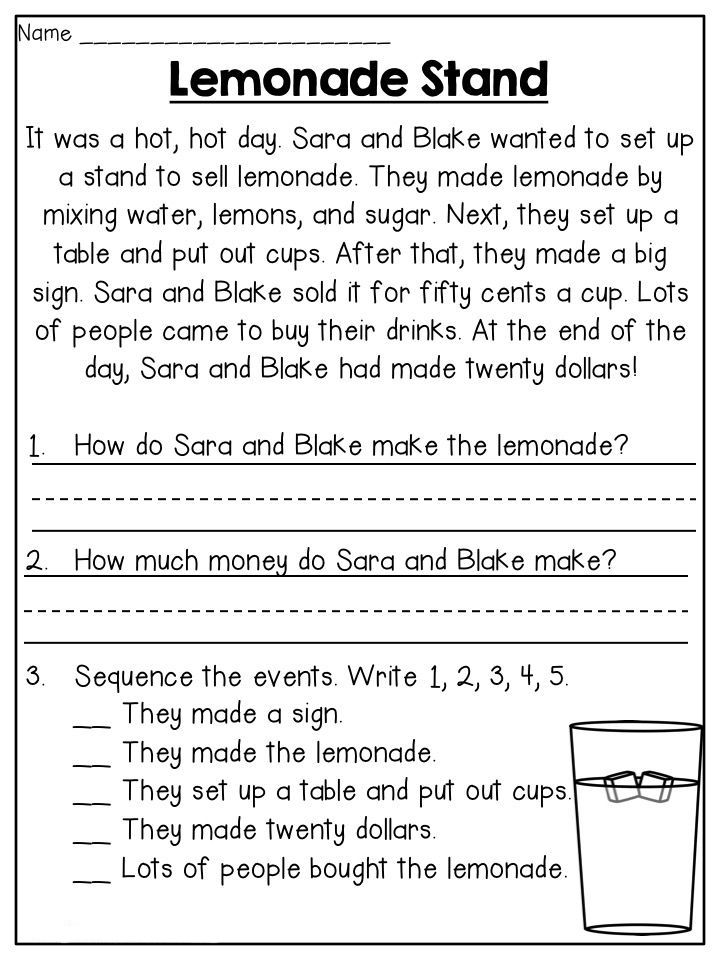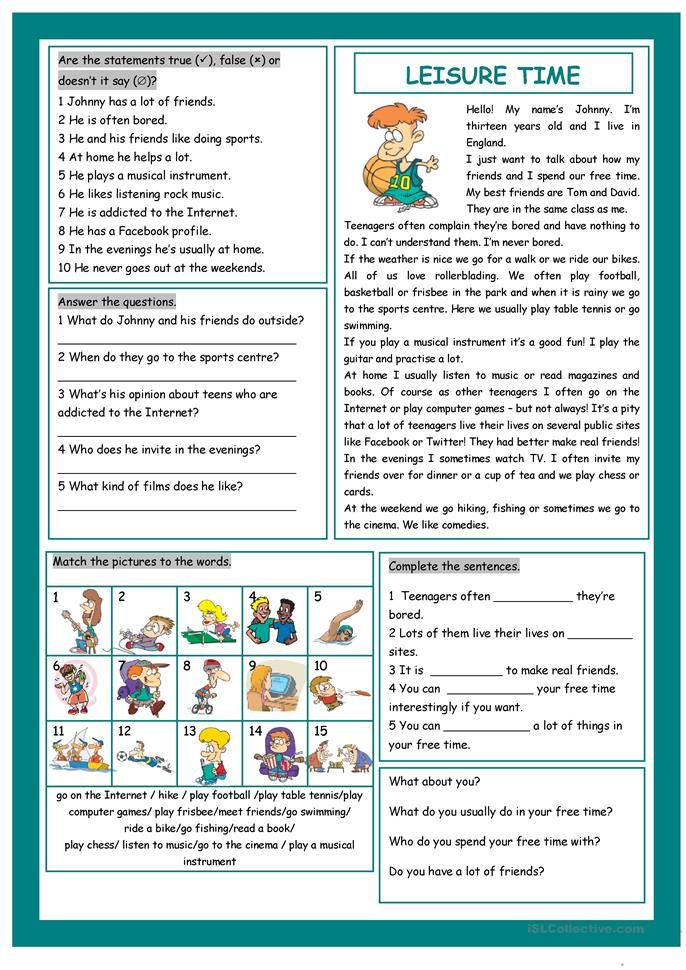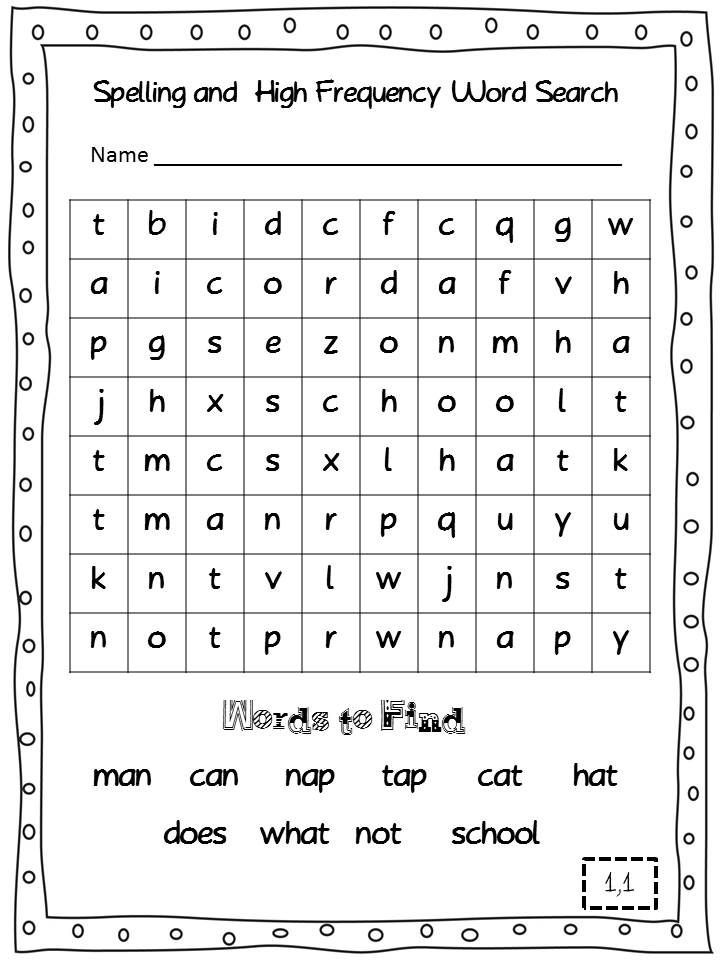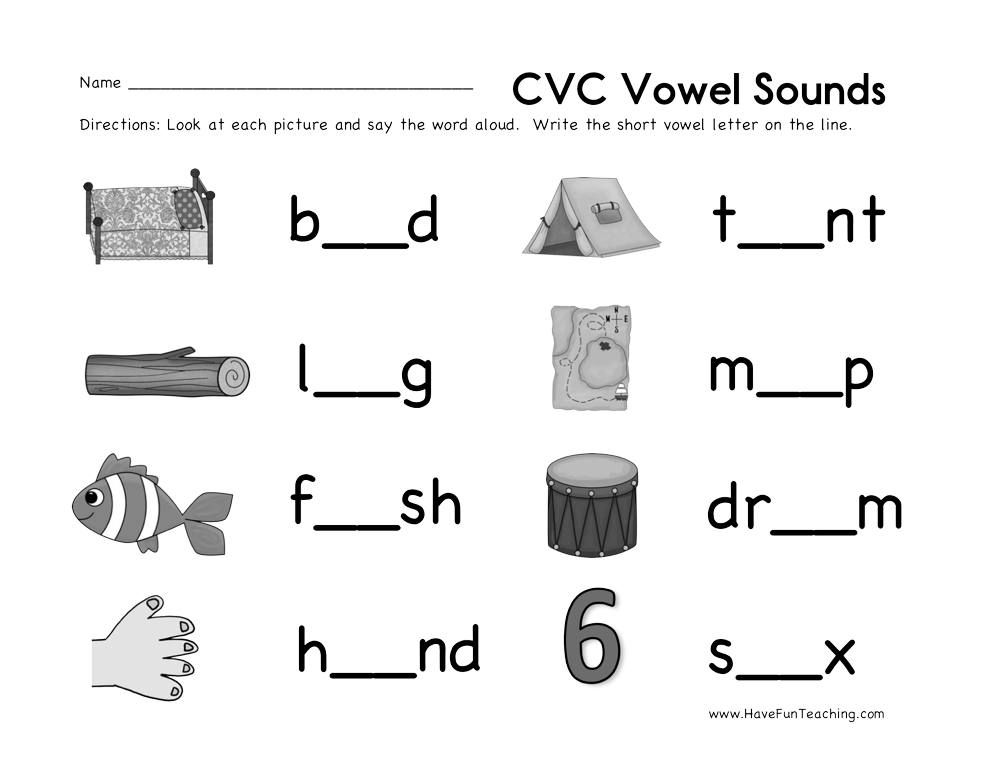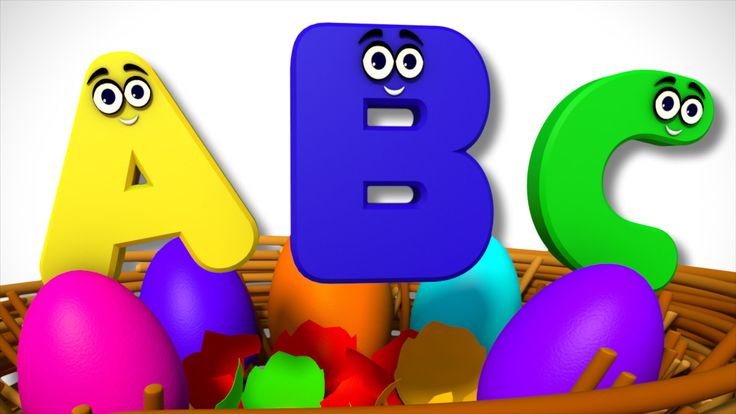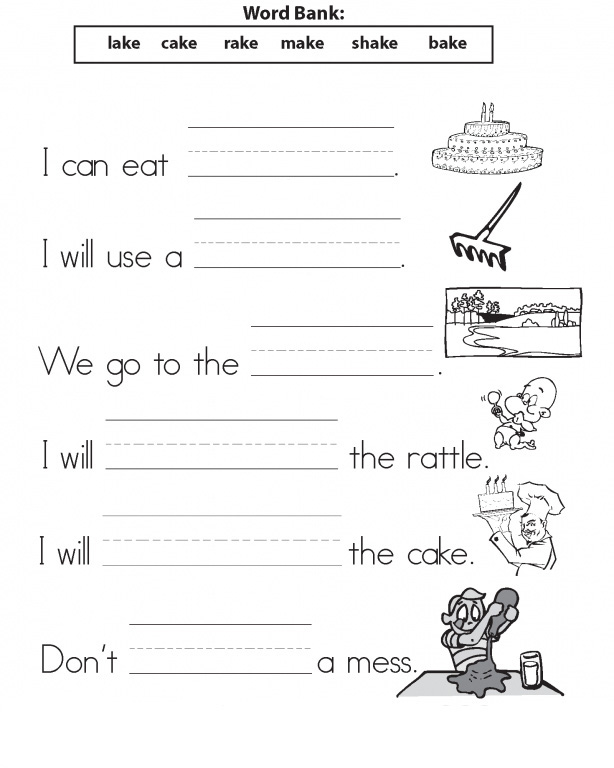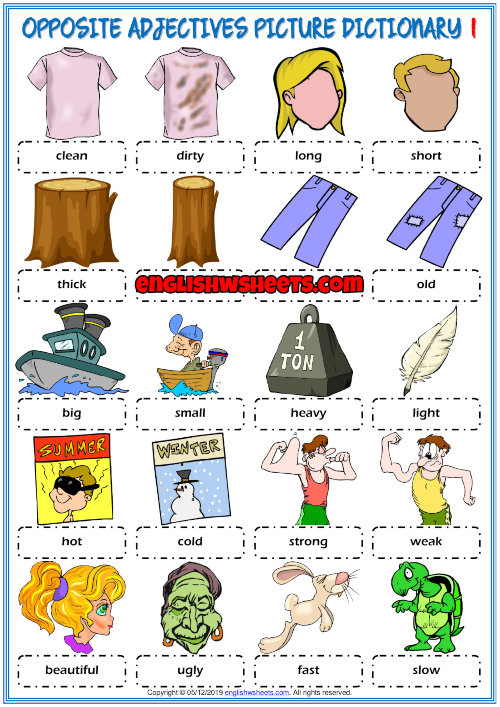Practicing vowel sounds
Ways to Practice English Pronunciation Vowel Sounds
English vowels can be confusing. It can be hard to tell when to use which letter when spelling, and the differences in pronunciation are sometimes small and difficult to hear.
What Are Vowels?
In the English language, the letters “a,” “e,” “i,” “o,” “u” and sometimes “y”are called vowels.
When you speak, you let out air through your mouth. Vowels make the sounds that come when the air leaving your mouth isn’t blocked by anything (like your teeth or your tongue). They are formed by moving your lips to different shapes.
The rest of the letters in the alphabet are called consonants. When speaking, consonants have sounds that are made by partially or fully blocking the air flow.
To form words, we put vowels together with consonants in a specific order. Here’s a simple example. Read this out loud:
Easy enough, right? The vowel “a” is placed between the consonants “c” and “t” to form the word for a small furry animal with ears. Now try reading this out loud:
You could say that many different ways:
like the “æ” sound in “cat”
like the name of the letter “a”
like an “ahh”…
So how you pronounce the letter “a” depends on the letters around it.
Finally, try to read this:
That’s not as easy, is it? If you put a different vowel between the “c” and the “t,” the word gets a different meaning (like “cot” or “cut”). Consonants and vowels need each other!
The Many Ways to Pronounce English Vowel Sounds
A vowel’s position in a word can affect the way you pronounce it. You can memorize some pronunciation rules or learn by finding patterns in words.
All vowels have at least two pronunciations: a long sound and a short sound. A long vowel is the name of the vowel (for example, long “a” is “ay” like in the word “say”). A short vowel is a shorter sound (for example, short “a” sounds like “æ” from the word “cat”).
Words are split up into syllables, which are uninterrupted bits of sound that form the word. Each syllable has one vowel sound. You can find the syllables in a word by placing your hand below your chin and saying it out loud. Every time your chin touches your hand, that’s a syllable. You can double check with sites like “How Many Syllables.”
Here are five of the most common rules for vowel pronunciation:
1. When a word or syllable ends in a consonant and has only one vowel, that vowel is short.
Examples: cat, bed, fish
2. When a word ends in “e,” the “e” is silent (not read out loud), and the vowel that comes before it is long.
Examples: bake, file, rope
3. When a syllable has two vowels next to each other, the first is usually long and the second short.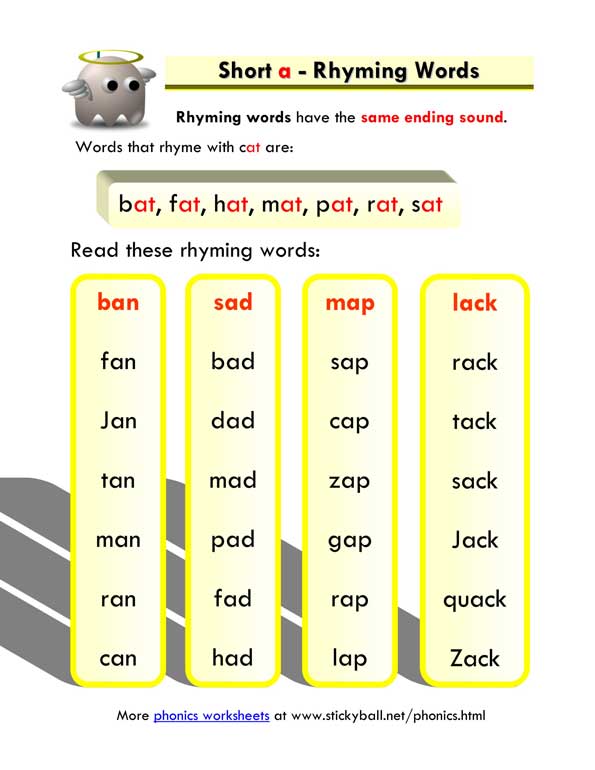
Examples: pain, boat, grow
4. When a syllable ends in one vowel, that vowel is usually long.
Examples: open, unit, paper
5. Many times, these rules don’t work! There are many exceptions(times when the rules are broken). Sometimes the only way to learn something is to practice and memorize it.
However you decide to learn, knowing the rules and how to actually make the sounds are both important to become fluent.
8 Unique Ways to Practice English Vowel Sounds
We know it can be hard to memorize rules and pronunciations, though. But don’t worry, that’s why we’re sharing these games—to make the learning process easier for you. Here are some fun ways to learn and improve your knowledge of English vowel sounds:
1. Pronunciation Mazes
A pronunciation maze is a worksheet filled with words.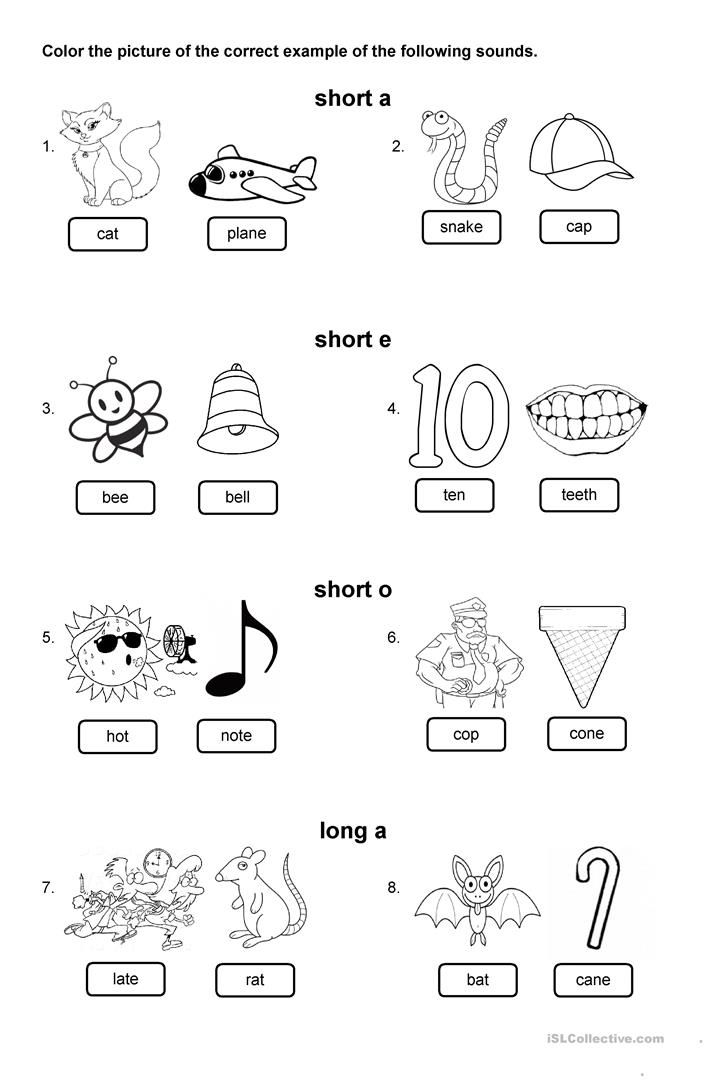 To complete the sheet, you have to get from a word on top to a word on the bottom, by finding words with the same vowel sounds.
To complete the sheet, you have to get from a word on top to a word on the bottom, by finding words with the same vowel sounds.
Here is a pronunciation maze for the sound “u” as in the word “but.”
Here is another maze for the sound “oo” as in “book.”
Here’s a maze for the “o” “ou” and “u” sounds.
Here’s another maze.
You can find many other mazes online by searching Google or Google image for “pronunciation maze.”
What you can learn: Vowels change their sound based on where they are in the word and the letters that surround them. Doing a pronunciation maze makes you aware of vowel sounds, and helps you hear the difference between “bit” and “beat,” for example.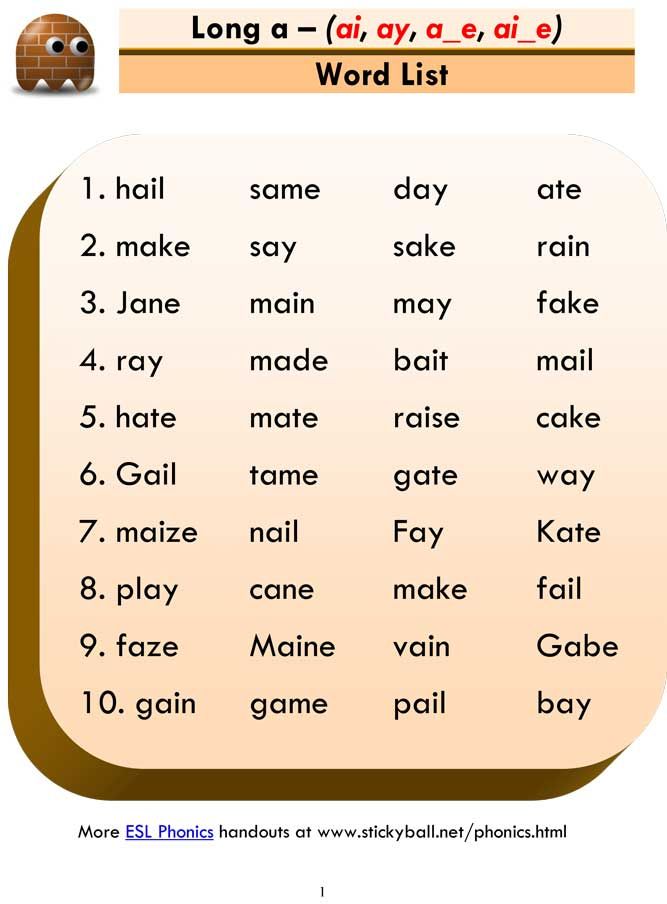
If you pay close attention, you can begin to notice some patterns—like that words with the letters “ea” in the middle usually make a similar sound (but not always!). That means the next time you see a word that has the letters “ea,” you might be able to pronounce it correctly without even knowing what it means.
2. Shadow Reading
Find a short clip from a movie or tv show or even your favorite commercial. Then turn on the subtitles and watch the clip twice. On the first time, just watch silently. On the second time, say the words along with the clip. Try to match the pronunciation, intonation (the rise and fall of the voice) and speed of the audio. This exercise is called “shadow reading.”
What you can learn: Speaking fluently is not just about knowing the right words and grammar. It’s about knowing how to say them, too. Speaking with the clip will help you practice speaking faster without pausing, and pronounce words correctly.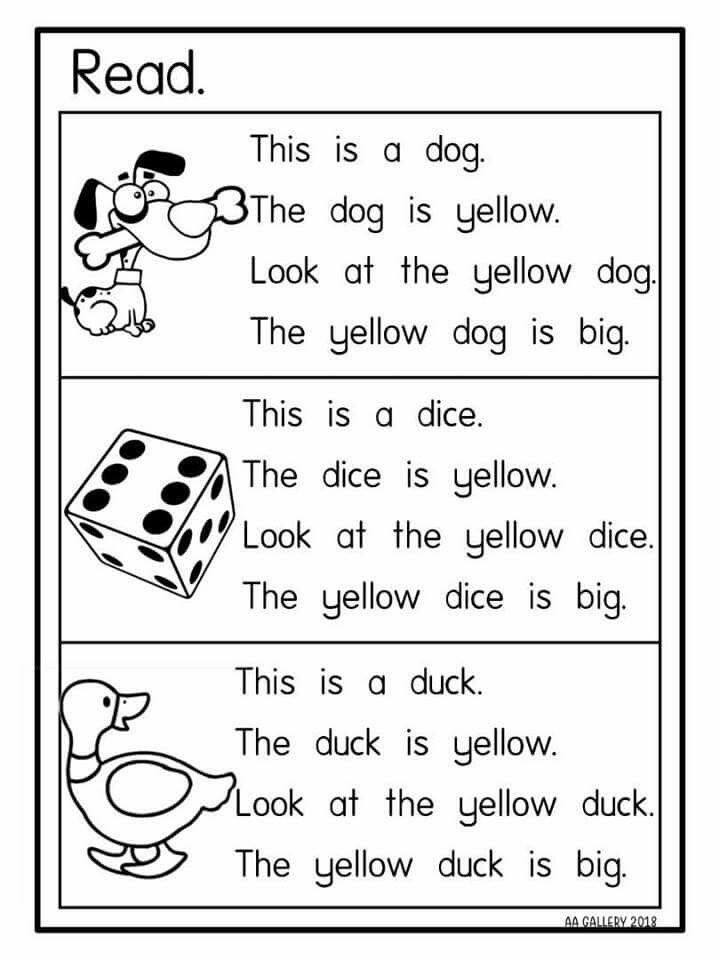
3. Tongue Twisters
Tongue twisters are a series of words that repeat the same sounds a lot, which makes them difficult to say fast. You can find a list of excellent vowel-focused tongue twisters here and here.
Choose a tongue twister and say it out loud. Say it quite slowly at first, and focus on pronouncing the vowels correctly. As you get more comfortable, say the tongue twister faster and faster. How fast can you go before your tongue gets all twisted up?
Use your phone to record audio of your English tutor saying the tongue twister slowly, and then faster. Use the audio to practice.
What you can learn: You’ve heard it before—practice, practice, practice! There’s no better way to learn than to practice. Tongue twisters are a fun way to practice saying certain sounds. The better you get at the tongue twisters, the better you will get at pronouncing different English vowel sounds correctly.
4. Silent Film
Find a movie clip or any other short video that has actual people speaking. Before pressing “play,” turn off the sound and remove the subtitles. Watch the clip and try to understand what the people are saying by the way their lips move.
What you can learn: Sound might come from the throat, but our mouths are where those sounds are shaped into letters and words. The shape of your mouth and location of your tongue when you speak are important for pronouncing words correctly.
Paying attention to the shape of peoples’ mouths when they speak can make it easier to understand and repeat the same sounds. Watching people speaking (with the sound off) makes you more aware of mouth shapes, and can help you understand how to pronounce the same sounds correctly.
The “u” sound in the word “rebuke” and the “oo” sound in the word “book” might seem similar, for example, but if you watch someone say the two words you’ll see the difference (your lips have to be more curled to make the “u” sound).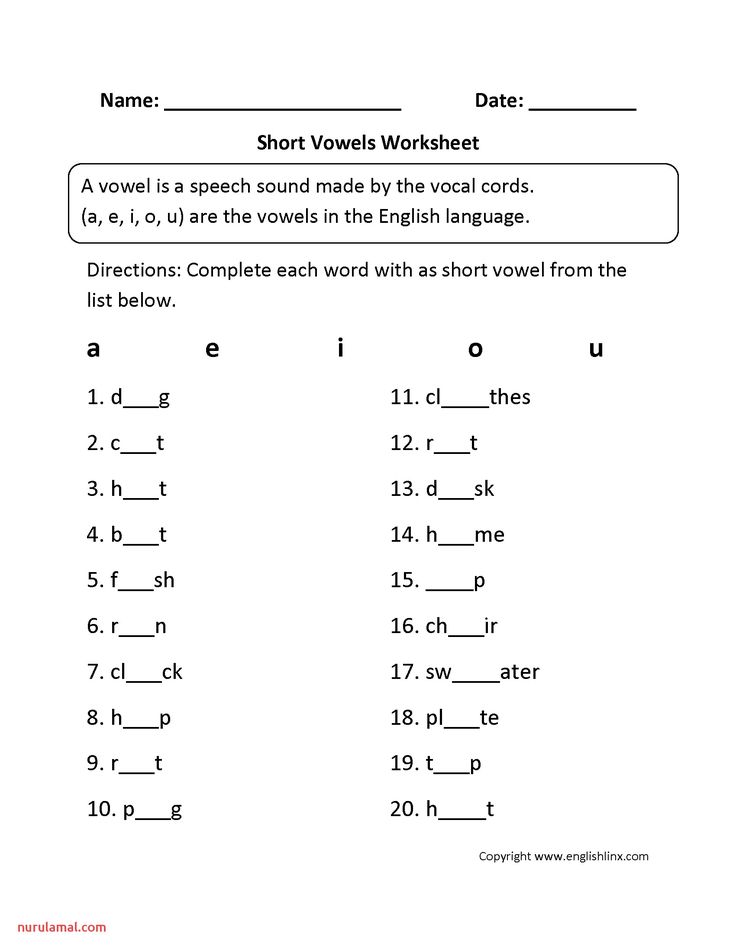
5. “Reading” the Dictionary
The next time you look up a new word in a dictionary, try to say the word out loud first, pronouncing as well as you can.
Then listen to the dictionary pronunciation of the word, say it together with the audio, and finally say it out loud on your own. Come as close as you can to what you hear.
What you can learn: You probably use an online dictionary or a dictionary app when you’re looking up new English words. If you only use the word and definition, then you’re missing out on some of the best features of online dictionaries!
Most online dictionaries have an audio button, which will say the word out loud for you. Some online dictionaries—like the Cambridge English Dictionary—even have a different audio button for American and British English, so you can hear the word in both accents.
Another useful feature of any dictionary (physical book or online) is the pronunciation guide.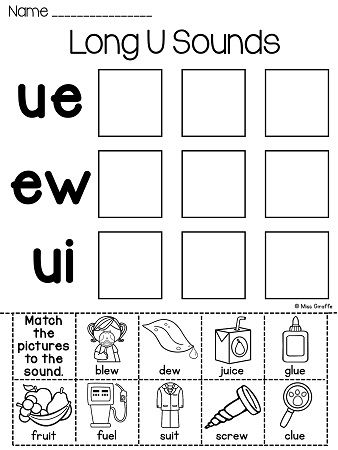 It might take a bit of time, but it’s useful to understand the dictionary pronunciation guide. This guide shows you how to pronounce any word in the dictionary. Now you’ll always know how to pronounce a word!
It might take a bit of time, but it’s useful to understand the dictionary pronunciation guide. This guide shows you how to pronounce any word in the dictionary. Now you’ll always know how to pronounce a word!
6. Minimal Pairs
Minimal pairs are words that sound the same except for one sound change, like “lice” and “rice” or “sit” and “seat.”
For this exercise, you’ll need a list of minimal pairs (you can find a good one here). Practice or record yourself saying the words out loud, speaking clearly and exaggerating the sounds (making them sound bigger and more important than they actually are).
What you can learn: Sometimes it’s difficult to hear the difference between certain vowel sounds. You can make it easier for yourself to hear the difference by practicing saying similar words. By making the sounds larger, you can hear and feel the difference better.
7.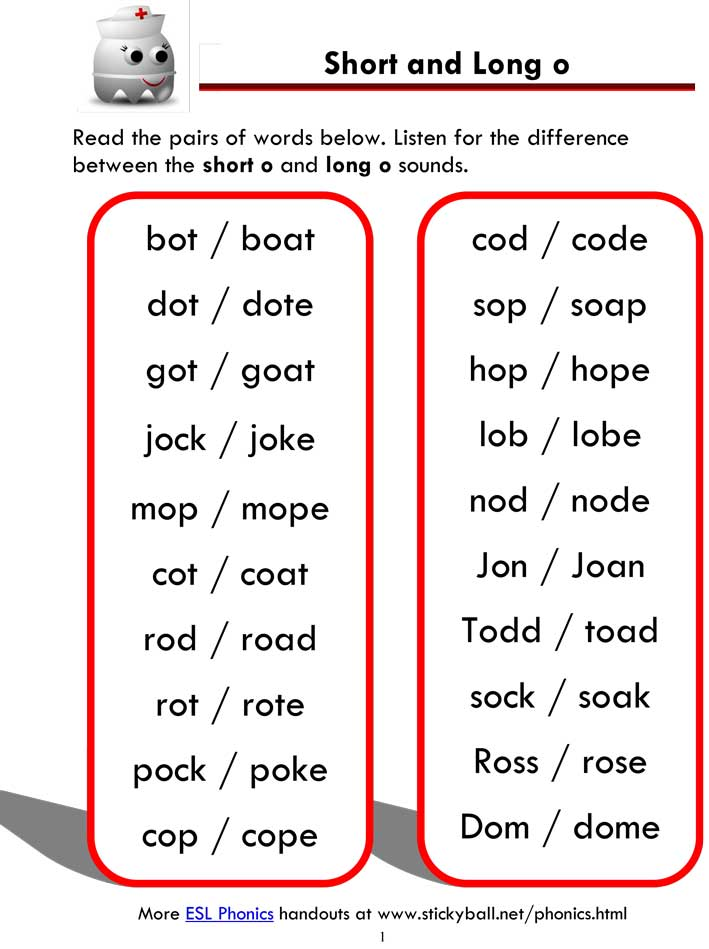 Read Dr. Seuss
Read Dr. Seuss
Dr. Seuss is a well-known children’s book author. His books are meant for kids to learn to speak (and read) well by using simple and catchy rhymes. Some Dr. Seuss books are an excellent way to learn vowel pronunciation!
The three best Dr. Seuss books for learning vowel pronunciation are “Oh Say Can You Say,” “Fox in Socks,” and “Hop on Pop.” Read them out loud!
Need some help? You can find audiobook versions of the books on Audible, or just search YouTube for read-alouds of them. Here’s a reading of “Oh Say Can You Say,” here’s one of “Fox in Socks,” and here’s one of “Hop on Pop,” for example.
What you can learn: Children’s books are great learning tools no matter what age you are. The words, rhythms and rhymes in Dr. Seuss books make them easy to remember and read. Since the books are meant to teach kids in the simplest way possible, you’ll be learning useful topics like long and short vowels, different vowel sounds and spelling patterns… all without even realizing it!
8.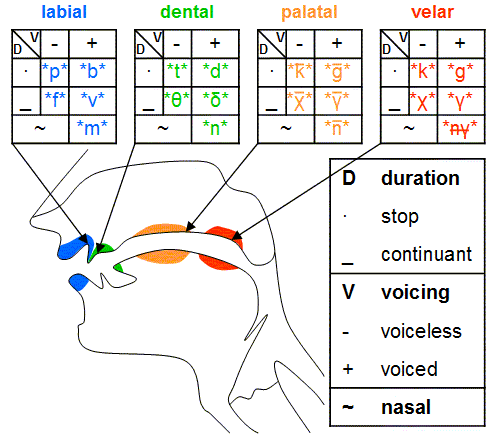 Song Games
Song Games
There are a number of children’s songs that help teach different vowels. Listen to and try to sing along with songs like “Apples and Bananas” and “The Frog Doesn’t Wash His Feet.”
These songs, and others like them, change the vowel sounds in words. This results in many nonsense words, like “benene” instead of “banana.” This is an effective method to learn vowel sounds because the rest of the word doesn’t change—so you can focus on the vowel sounds instead.
What you can learn: It’s important to know the right pronunciation of a word, but just knowing how to make the different vowel sounds can help you speak correctly.
Happy learning! For more help, see me for a trial lesson!
What Are English Vowels? The Full Answer, Plus Pronunciation and Practice Tips
By Yuliya Geikhman Last updated:
English vowel sounds and vowel pronunciation can be challenging for those trying to learn English as a second language.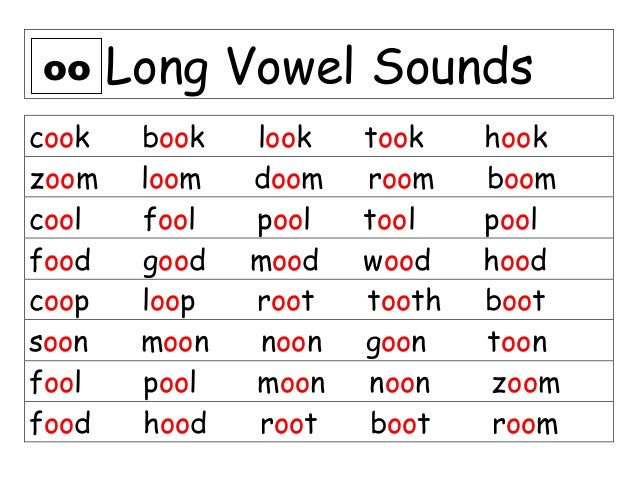
It’s often difficult to decipher when to use the correct letter and how to pronounce it correctly.
But don’t worry! I’ve put together eight fun tips and resources that you can use to practice English vowels and improve your pronunciation.
Let’s dive in!
Contents
- What Is a Vowel?
- English Vowel Pronunciation
- 8 Ways to Practice English Vowel Sounds
-
- 1. Pronunciation Mazes
- 2. Shadow Reading
- 3. Tongue Twisters
- 4. Mute the Sound
- 5. Reading the Dictionary
- 6. Minimal Pairs
- 7. Read Dr. Seuss
- 8. Song Games
Download: This blog post is available as a convenient and portable PDF that you can take anywhere. Click here to get a copy. (Download)
What Is a Vowel?
The simple answer to the question above is: vowels are the letters a, e, i, o, u and sometimes y.
Have you ever wondered why those letters are vowels, though? They are the sounds you make without anything breaking the sound or air coming out of your mouth.
Make the “e” sound out loud. Now place your tongue between your teeth or on the roof (top, inside part) of your mouth and try again. And now close your mouth and try one more time.
It’s difficult—almost impossible—to make that sound when there’s something like your lips or your tongue in the way, isn’t it?
Every other letter in the English alphabet is called a consonant.
The sounds of consonants, on the other hand, are made by placing your tongue or lips in a certain way. This blocks the air coming out of your mouth when you speak, turning it into a specific sound.
When vowels are placed between consonants, all the sounds come together and a word is formed.
English Vowel Pronunciation
Note: This post focuses on standard American pronunciation. In different parts of the world, like Britain, Australia and even the regional U.S., there are variations in the way people pronounce their vowels.
In different parts of the world, like Britain, Australia and even the regional U.S., there are variations in the way people pronounce their vowels.
Most of the time, a vowel makes its own sound (that is, the letter a makes a sounds).
In some rare cases, though, a certain sound is made by a combination of other letters (like when the long a sound is made by the letters ei).
All vowels have at least two pronunciations: a long sound and a short sound.
A long vowel is the name of the vowel (for example, long a is ay like in the word say). A short vowel is a shorter sound (for example, short a sounds like æ from the word cat).
A vowel’s position in a word can affect the way you pronounce it. For example:
1. When a word or syllable ends in a consonant and has only one vowel, that vowel is short.
Examples: cat, bed, fish
2. When a word ends in e, the e is silent (not read out loud), and the vowel that comes before it is long.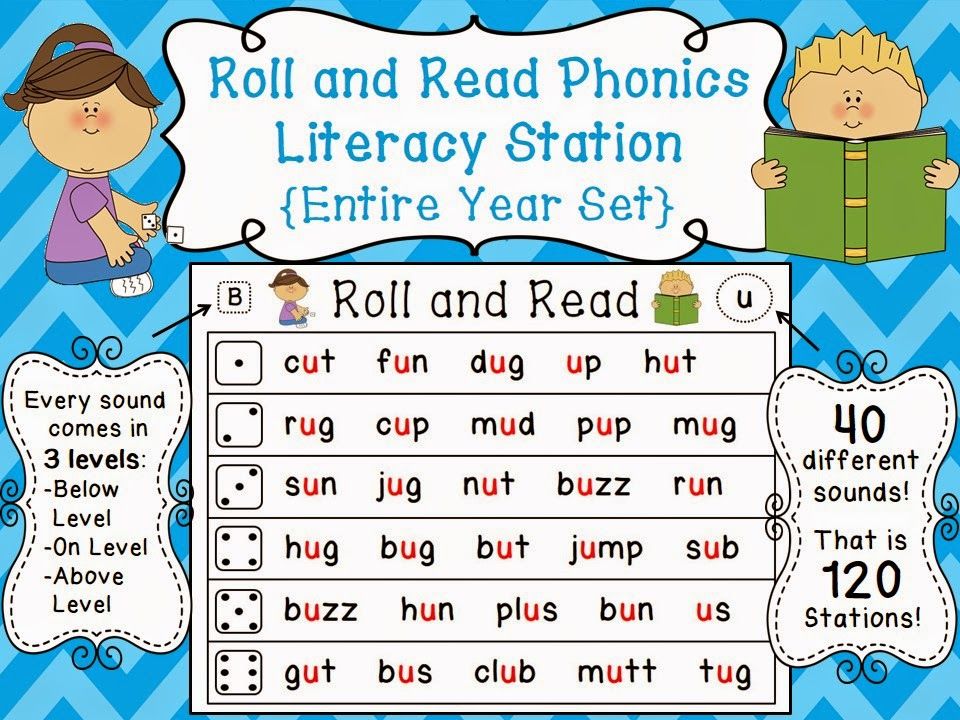
Examples: bake, file, rope
3. When a syllable has two vowels next to each other, the first is usually long and the second short.
Examples: pain, boat, grow
4. When a syllable ends in one vowel, that vowel is usually long.
Examples: open, unit, paper
Keep in mind that every rule has exceptions and there are times when the rules don’t apply! Sometimes the only way to learn something is to practice and memorize it.
8 Ways to Practice English Vowel Sounds
I know it can be hard to memorize rules and pronunciation. But whichever way you choose to learn, knowing the rules as well as practicing how to actually make the sounds are both important to become fluent.
Here are some fun ways to learn and improve your knowledge of English vowel sounds and make the learning process easier for you:
1. Pronunciation Mazes
A pronunciation maze is a worksheet filled with words. To complete the sheet, you have to start with a word on top and finish with a word on the bottom—finding words with the same vowel sounds.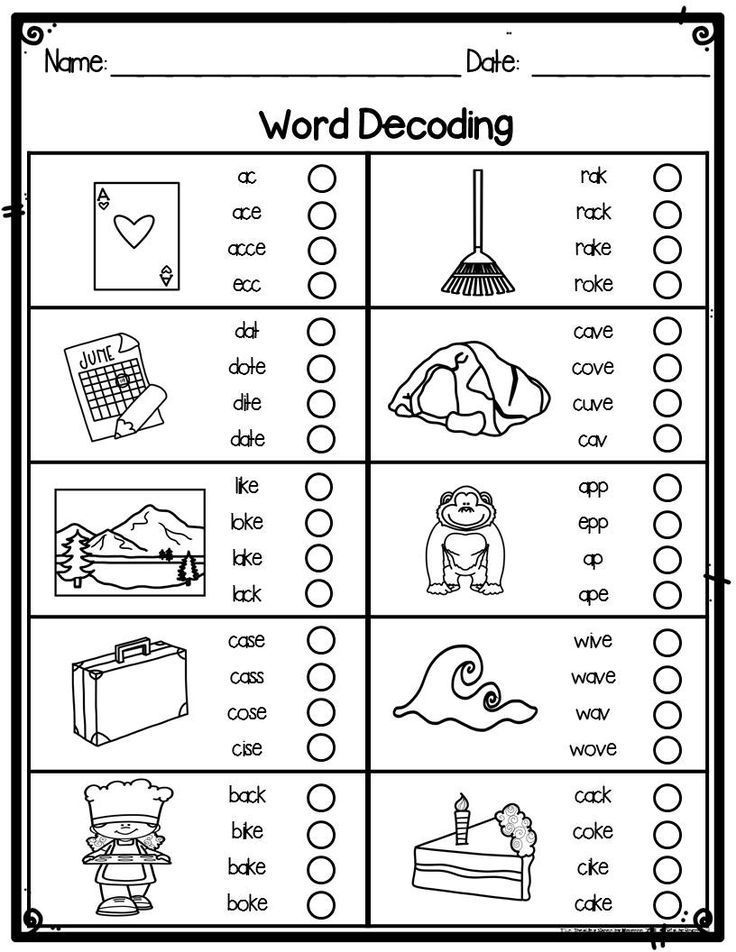
- Here is a pronunciation maze for the sound u as in the word but.
- Here is another maze for the sound oo as in book.
- Here is a maze for the o, ou and u sounds.
You can find many other mazes online by searching for pronunciation maze.
What you can learn: Vowels change their sound based on where they are in the word and the letters that surround them. Doing a pronunciation maze makes you aware of vowel sounds and helps you hear the difference between bit and beat, for example.
If you pay close attention, you can begin to notice some patterns—like that words with the letters ea in the middle usually make a similar sound (but not always!).
That means the next time you see a word that has the letters ea, you might be able to pronounce it correctly without even knowing what it means.
2. Shadow Reading
Find a short clip from a movie, TV show or even your favorite commercial.
You can do this on YouTube, or opt for a program where the subtitles are sure to be 100% accurate, like FluentU.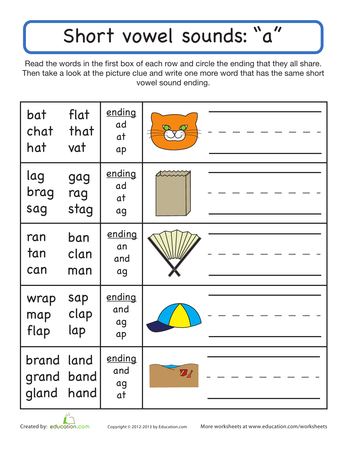 Every video on FluentU includes interactive subtitles, so you’ll be reading, watching and listening at the same time.
Every video on FluentU includes interactive subtitles, so you’ll be reading, watching and listening at the same time.
You can check the meaning of any word without leaving the video player by hovering your mouse over or clicking on the word. You can also easily replay individual sentences just by clicking on an arrow, which is very useful for shadowing.
Watch the clip twice. The first time, just watch silently. The second time, say the words along with the clip. Try to match the pronunciation, intonation (the rise and fall of the voice) and speed of the audio. This exercise is called shadow reading.
What you can learn: Speaking fluently is not just about knowing the right words and grammar. It’s about knowing how to say them, too. Speaking with the clip will help you practice speaking faster without pausing and still pronouncing words correctly.
3. Tongue Twisters
Tongue twisters are a series of words that repeat the same sounds often, which makes them difficult to say fast. You can find a list of excellent vowel-focused tongue twisters here.
You can find a list of excellent vowel-focused tongue twisters here.
Choose a tongue twister and say it out loud. Say it quite slowly at first and focus on pronouncing the vowels correctly. As you get more comfortable, say the tongue twister faster and faster.
Use your phone to record audio of your English tutor or language partner saying the tongue twister slowly, then faster. Use the audio to practice. Alternatively, you could also search for a YouTube video of a native speaker saying the tongue twister.
What you can learn: You’ve heard it before—practice, practice, practice! There’s no better way to learn than to practice. Tongue twisters are a fun way to practice saying certain sounds. The better you get at the tongue twisters, the better you will get at pronouncing different English vowel sounds correctly.
4. Mute the Sound
Find a movie clip or any other short video that has actual people speaking. Before pressing play, mute the sound and remove the subtitles.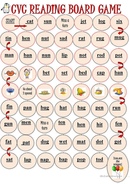 Watch the clip and try to understand what the people are saying by the way their lips move.
Watch the clip and try to understand what the people are saying by the way their lips move.
What you can learn: Sounds generally come from the throat, but our mouths are where those sounds are shaped into letters and words. The shape of your mouth and the location of your tongue when you speak are important for pronouncing words correctly.
Paying attention to the shape of peoples’ mouths when they speak can make it easier to understand and repeat the same sounds. Watching people speak—with the sound off—makes you more aware of mouth shapes and can help you understand how to pronounce the same sounds correctly.
The u sound in the word rebuke and the oo sound in the word book might seem similar but when watching someone say the two words you’ll see the difference.
5. Reading the Dictionary
The next time you look up a new word in a dictionary, try to say the word out loud first, pronouncing it as well as you can.
Then listen to the dictionary pronunciation of the word, say it together with the audio and finally say it out loud on your own.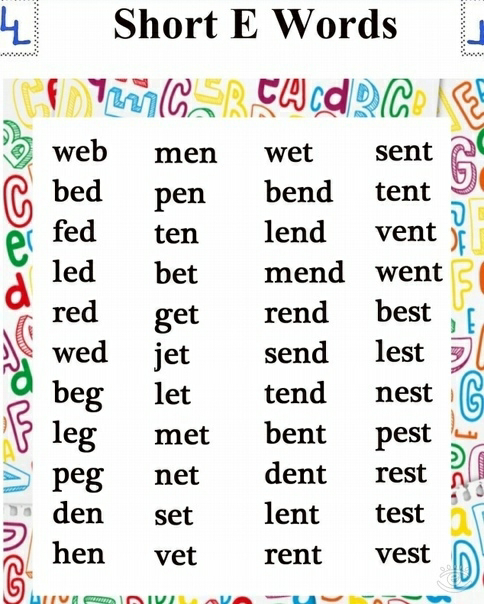
What you can learn: You probably use an online dictionary or a dictionary app when you’re looking up new English words. If you only use the word and definition, then you’re missing out on some of the best features of online dictionaries!
Most online dictionaries have an audio button, which will say the word out loud for you. Some online dictionaries—like the Cambridge English Dictionary—even have a different audio button for American and British English, so you can hear the word in both accents.
Another useful feature of any dictionary—physical or online—is the pronunciation guide. It might take a bit of time, but it’s useful to understand the dictionary pronunciation guide. This guide shows you how to pronounce any word in the dictionary.
6. Minimal Pairs
Minimal pairs are words that sound the same except for one sound change, like bus and buzz or sit and seat.
For this exercise, you’ll need a list of minimal pairs—you can find a good one here.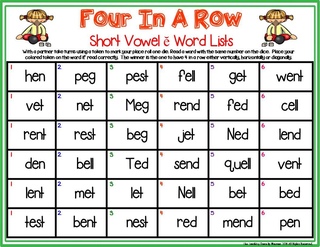
Practice or record yourself saying the words out loud, speaking clearly and exaggerating the sounds—making them sound bigger and more important than they actually are.
What you can learn: Sometimes it’s difficult to hear the difference between certain vowel sounds. You can make it easier for yourself to hear the difference by practicing and saying similar words. By making the sounds larger you can better hear and feel the difference.
7. Read Dr. Seuss
Dr. Seuss is a well-known children’s book author. His books are meant for kids to learn to speak and read well by using simple and catchy rhymes. Some Dr. Seuss books are an excellent way to learn vowel pronunciation!
The three best Dr. Seuss books for learning vowel pronunciation are “Oh Say Can You Say,” “Fox in Socks,” and “Hop on Pop.” Read them out loud!
Need some help? You can find audio versions of the books on YouTube as a read-along version. Here’s an audio reading of “Oh Say Can You Say,” here’s one of “Fox in Socks,” and here’s one of “Hop on Pop,” to get you started.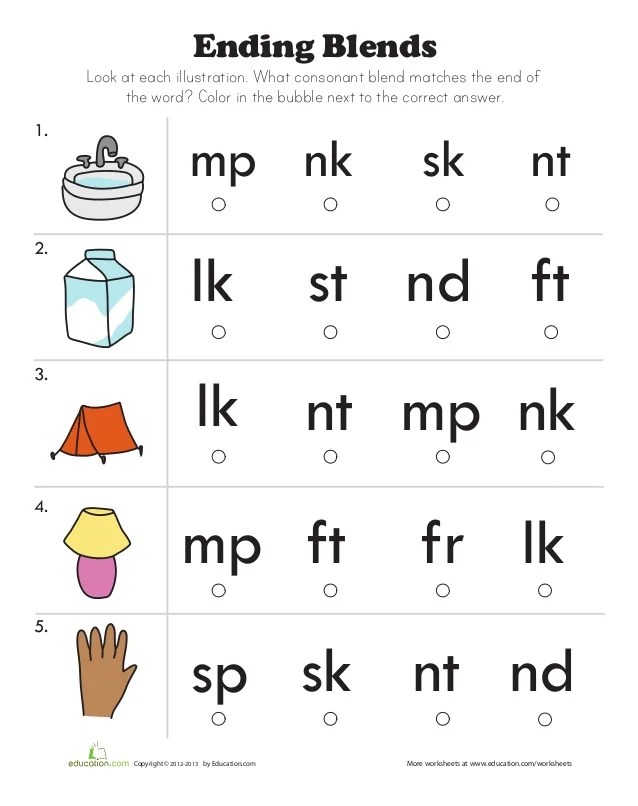
What you can learn: Children’s books are great learning tools no matter what age you are. The words, rhythms and rhymes in Dr. Seuss books make them easy to remember and read. Since the books are meant to teach kids in the simplest way possible, you’ll be learning useful topics like long and short vowels, different vowel sounds and spelling patterns.
8. Song Games
There are a number of children’s songs that help teach different vowels as well. Listen and try to sing along with songs like “Apples and Bananas” and “The Frog Doesn’t Wash His Feet.”
Many songs like these change the vowel sounds in words. This results in many nonsense words, like benene instead of banana. This is an effective method for learning vowel sounds because the rest of the word doesn’t change—helping you to focus on the vowel sounds instead.
What you can learn: It’s important to know the right pronunciation of a word, but just knowing how to make the different vowel sounds can help you speak correctly.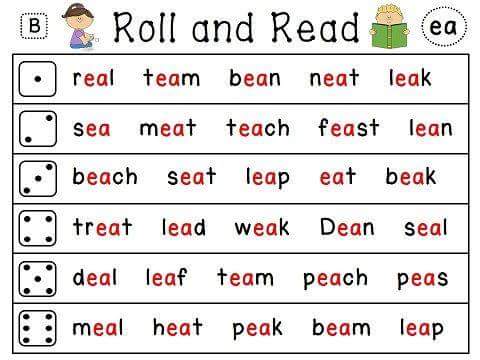
Learning vowel sounds and pronunciations will make it easier for you to learn new English words and become more fluent in the language.
Take some time to practice and learn with these exercises and you’ll be having fun and learning at the same time!
Download: This blog post is available as a convenient and portable PDF that you can take anywhere. Click here to get a copy. (Download)
« 10 Common English Slang Words and Phrases That Are Silly Enough to Embarrass Native Speakers
Are You Saying These 12 Words Wrong, Like Most People? »
Practicing vowel sounds. Master the power of suggestion! Get everything you want!
Vowel practice
Vowel sounds are responsible for the melodiousness, melodiousness of the voice. Well-developed, open vowels diversify intonation, allow you to "play" with your voice, make it expressive.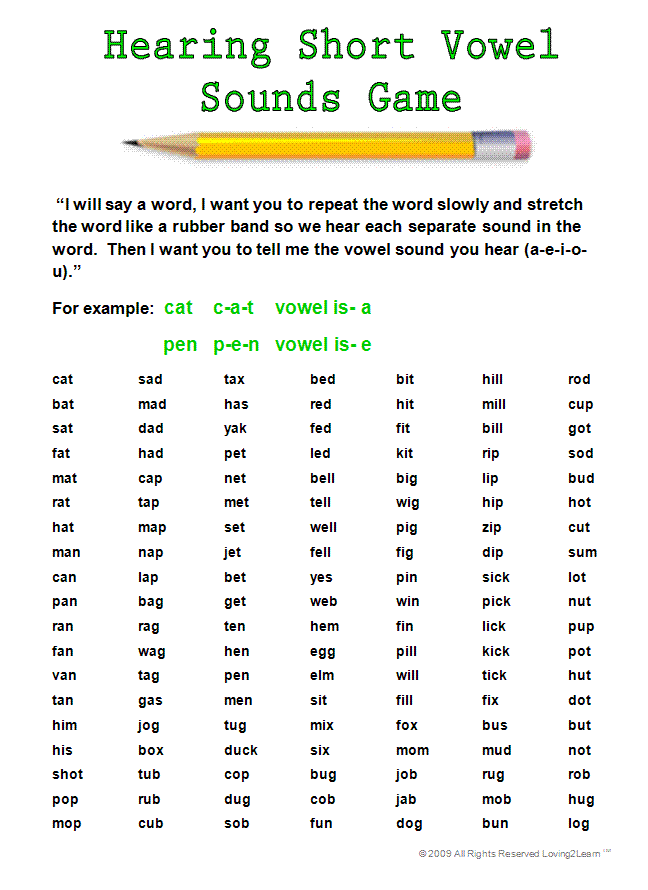
The complex of the following exercises will help your voice become mobile and intonation rich. You need to do them one by one, one after the other.
Exercise
"Pull the sound "A""
Starting position - standing. The back is straight, look ahead. Take active, deep breaths through your nose. Pull the sound "ahhh." Feel the volume it gives.
Release the breath and inhale again. Again pull the sound "ahhh", only this time rotate your head - slowly at first, then faster. Feel how the sound of your voice changes as you move your head.
Exercise
"A" with squat"
The original position is the same. Take a breath and make an "ahhhh" sound.
Quickly squat and stand up (spine perfectly straight). How does this vowel sound at the bottom, and how does it sound at the top?
Exercise variant: squat slowly, and jump up sharply, literally shoot upwards, like a cork shoots out of a champagne bottle. Repeat the exercise several times, remember your voice sensations.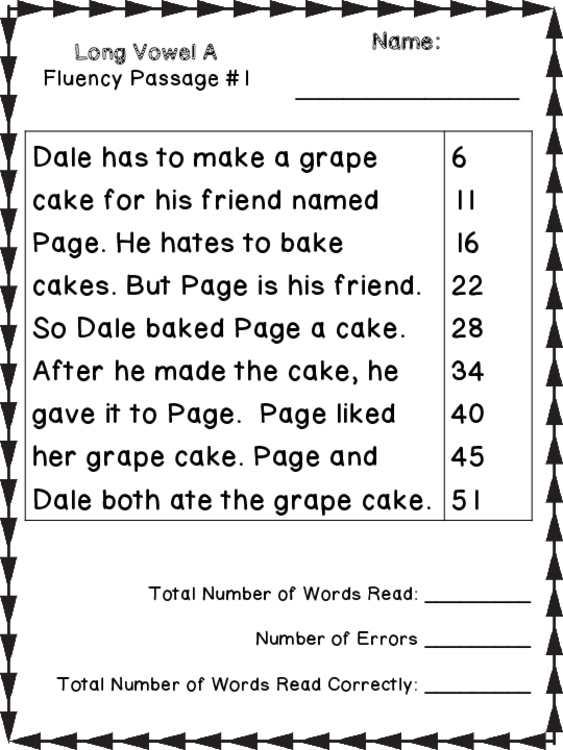
Exercise
"Gymnastics for vowels"
Starting position - standing. The spine is straight. Stretch your arms out in front of you and lean forward. Touch the floor with your hands and lean on them. Move the center of gravity of the body closer to the hands. You may have to stand on your tiptoes. The head hangs down freely. Take a breath and pull sounds:
II-AA-II-AA-II-AA II-YAYA-II-YAYA-II-YAYA
Remember the vocal sensations.
Exercise
“Backward Vowels”
Starting position - standing, arms lowered along the body. Tilt your head back, open your mouth and stretch up a little. The position of the larynx is “on a yawn”. Take a deep breath through your mouth and draw out the "AAAA" sound. Slowly raise your head, translating "AAAA" to "III" and vice versa. You should get:
AAAA-IIIIII-AAAAAA-IIIIII-AAAAAA-IIIIII
The sound should stop when you touch your chin to your chest, so time your breath so that it lasts for the entire exercise.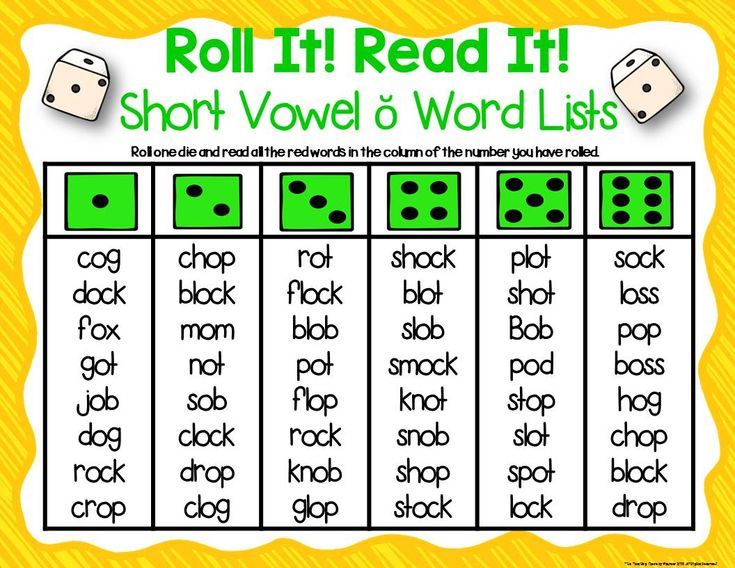 Take your breath again and, raising your head and moving it back, draw sounds, only this time start with "III".
Take your breath again and, raising your head and moving it back, draw sounds, only this time start with "III".
Exercise
"Paint the ceiling"
Breathe a little through your mouth, set the rhythm of breathing at which you feel free and comfortable. As you inhale and exhale, say barely audible: AAH - HAH. The strength of the sound should be minimal, such that the sound is only just different from a whisper.
Now tilt your head back. The larynx is completely free, the position is “on a yawn”. Imagine that with each sound of AAH - KHAA, a cloud of paint flies out of your mouth, like from a spray bottle. "Paint" the ceiling with your breath. Rotate your head to paint over all sides and corners.
Exercise
"Echo effect"
Starting position standing. The spine is straight, the larynx is free, the position is "on a yawn". Take a deep, active breath through your nose and shout "HEY" first loudly, then quieter, quieter, and finally quite quietly. Simulate an echo effect. Repeat the same on the sounds "OH", "AY", "OY", "YY".
Simulate an echo effect. Repeat the same on the sounds "OH", "AY", "OY", "YY".
Exercise
"Working out consonants"
Consonant sounds are word-forming. Diction depends on the clear pronunciation of consonants. A set of exercises for practicing consonants will help you improve your diction and make your speech more intelligible.
1. Say difficult combinations of sounds at first slowly, then faster: TLZ, DZhR, VRZH, KPT, MKRTCH, KFT, KST, KST, KTSCH, KZhDA, KZhDE, KZhDO, KZhDU, KSHTA, KSHTE, KSHTU, KSHTO.
2. Take active, deep breaths. Articulating well with your lips, say:
BUP-BOP-BAP-BEP-BIP-BYP
PTKU-PTKO-PTKA-PTKE-PTKY-PTKI
VZHA - VZhO - VZhU - VZhE - VZhI
RZHA-RZhO-RZhU-RZhE-RZhI
MNU-MNO-MNA-MNE-MNI-MNY
MGU–MGO–MGA–MGE–MGI–MGI
SHRU-SHRO-SHRA-SHRE-SHRI-SHRY
SHUKL-SHKL-SHKL-SHKL-SHKL
FRU-FRO-FRA-FRE-FRI-FRY
RCU–RTSO–RTSA–RTSE–RTTSY
SUSh–SOSH–SASH–SESH–SYSH–SISh
BRU-BRO-BRA-BRE-BRY-BRI
BAM-BOOM-BEM-BYM-BAM-BIM
BUN-BON-BAN-BEN-BIN-BYN
This text is an introductory fragment.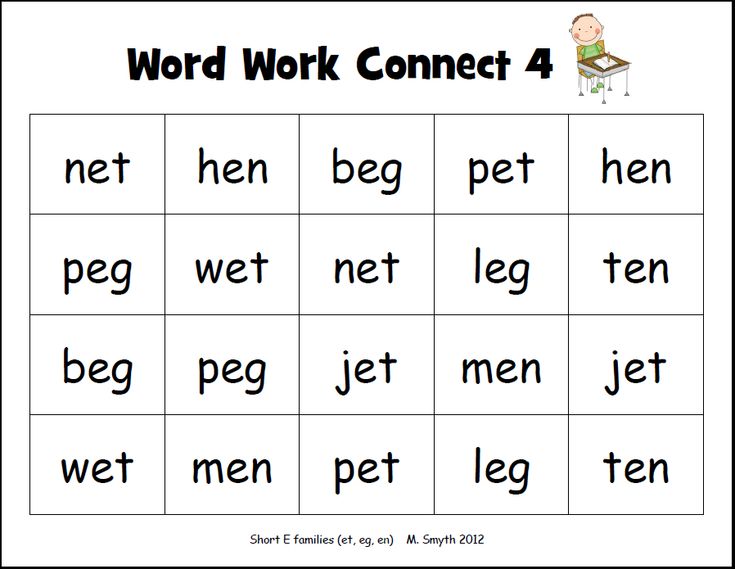
Practicing communication techniques
Practicing communication techniques Any need, being excited, causes the work of the imagination, leads to the activation of activity, including the technique of satisfying this need. Thus, achieving a goal caused by the need for prestige involves a certain technique
4.11 Sound image encoding
4.11 Image encoding of sounds In order to consistently remember the sound of a new alphabet for you, you need to encode the sounds of this alphabet into images. In this case, the selected images must satisfy two conditions. First, images should be easy to remember.
Taming the world of sounds
Taming the world of sounds As you know, musicians, composers, singers have the best auditory (or sound) memory.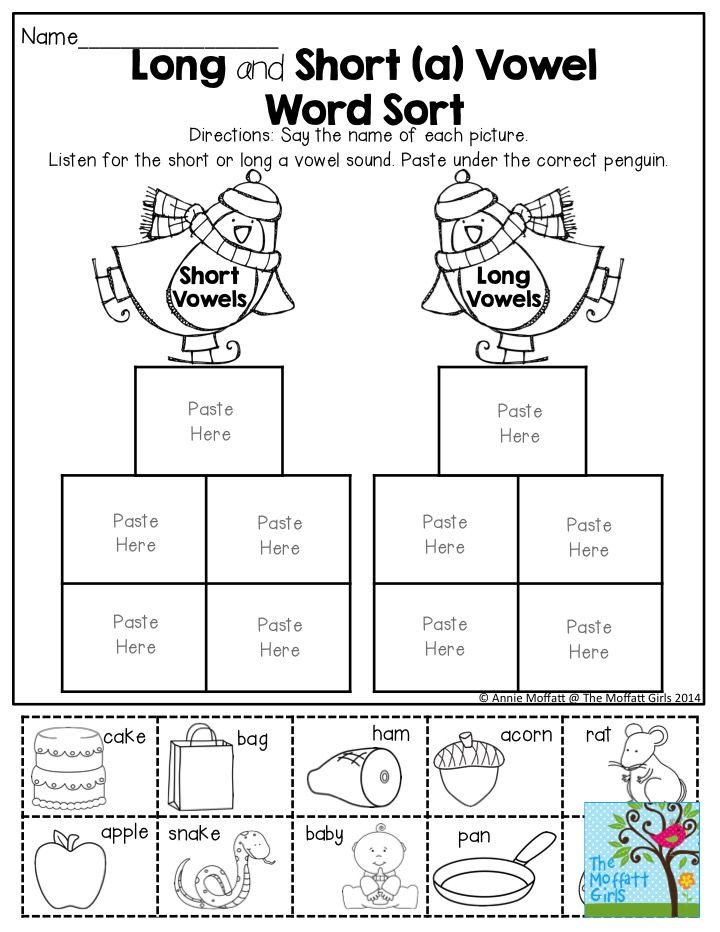 Probably, parody masters and the blind can also be added to this list. Many by nature have a good memory for various sounds, voices. For me,
Probably, parody masters and the blind can also be added to this list. Many by nature have a good memory for various sounds, voices. For me,
Practicing partner admiration. Let go to stay
Practicing admiration for a partner. Let go to stay 05/05/2002. Sunday Arrived from the seminar - he immediately called. In a voice hoarse from a cold, I answered his questions in a laconic manner and invited him "for tea." He arrived, and I began to hug him with joy and admiration.
Practicing relationships with mother. Complete success
Working out relationship with mom. Complete success Mom decided to take a loan. With her inability to manage money, this is a debt hole and a financial risk that can close on me. Therefore, I gave my mother an ultimatum: having taken a loan from a bank, she will no longer see me in her
Taming the world of sounds
Taming the world of sounds As you know, musicians, composers, singers have the best auditory (or sound) memory. Probably, parody masters and the blind can also be added to this list. Many by nature have a good memory for various sounds, voices. For me,
Probably, parody masters and the blind can also be added to this list. Many by nature have a good memory for various sounds, voices. For me,
Visualization Practice: White Spot Technique
Visualization Practice: White Dot Technique 1. Before bed. Make a firm resolve to become aware of the dream state. B. Visualize in the larynx (point 2) a red, brightly glowing letter "A" (see comment below). Focus on radiation A. Imagine that it illuminates all things
Visualization Practice: Black Dot Technique
Visualization Practice: Black Dot Technique 1. Before bed. Focus on the white dot between the eyebrows (point 1 in the diagram).2. At dawn A. Perform potty breathing 21 times (see exercise above). B. Repeat your intention to become aware of the dream state 21 times. After that
Distribution of roles in the team (good - evil, stressor - conciliator, etc.
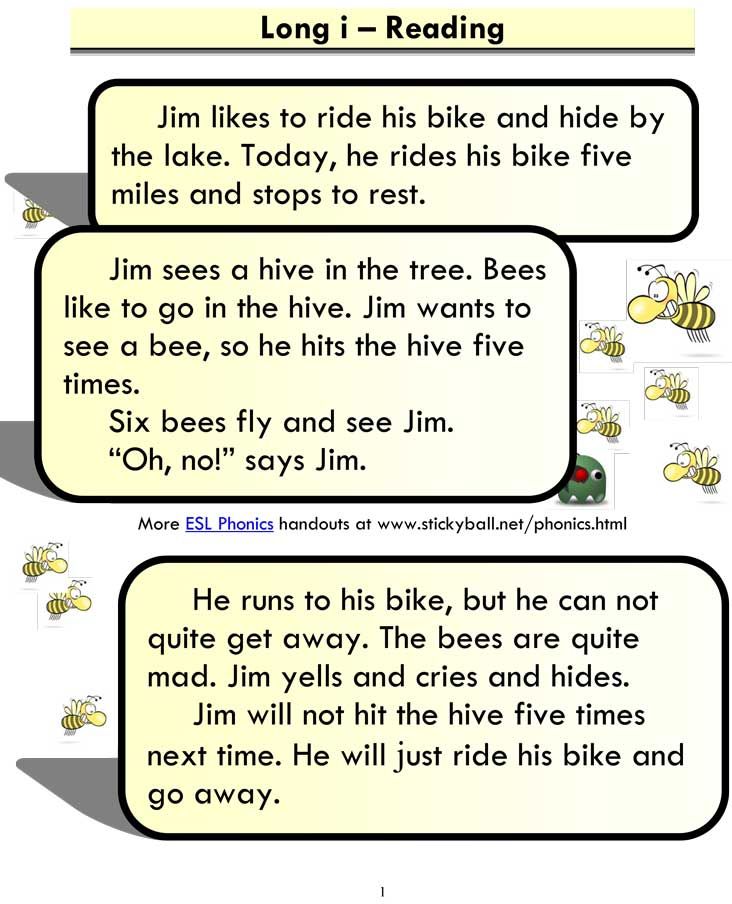 ) and working out interaction
) and working out interaction Distribution of roles in the team (good - evil, stressor - conciliator, etc.) and working out interaction In order for the impact on opponents to be more effective, you need to correctly distribute the roles in the team. The ideal option is an analogue of a hockey team, where there are
Exercise 7 Practicing the technique of self-assuming
Exercise 7 Practicing the technique of self-assuming The first time the exercise is best done alone, setting aside time when no one will bother you. The exercise should be performed in silence. Take a few breaths and exhales, abandoning everyday
§ 3. The world of sounds and smells
§ 3. The world of sounds and smells We cannot discuss in detail all types of sign systems that become a target for influences that serve to manipulate consciousness. Let us briefly mention a few more. An important sign system is the acussphere, the world of sound forms of culture. Sounds,
Let us briefly mention a few more. An important sign system is the acussphere, the world of sound forms of culture. Sounds,
Sound recognition
Sound recognition For these exercises, it is desirable to use the didactic material used in the main institutions for the deaf and dumb in Germany and America. Such exercises are an introduction to the study of the art of speech and are highly conducive to
Setting vowels in a child - a manual for speech therapists
Setting vowels in speech therapy is one of the key tasks. It is important to teach a preschooler the correct pronunciation of all the sounds of the Russian language. Sonorant, hissing and whistling phonemes are the most difficult for children's perception, but in recent years the number of preschool children with impaired pronunciation of vowels has increased.
Articulation of vowels in the norm
The category of vowels includes 6 phonemes: A, I, U, O, E, Y.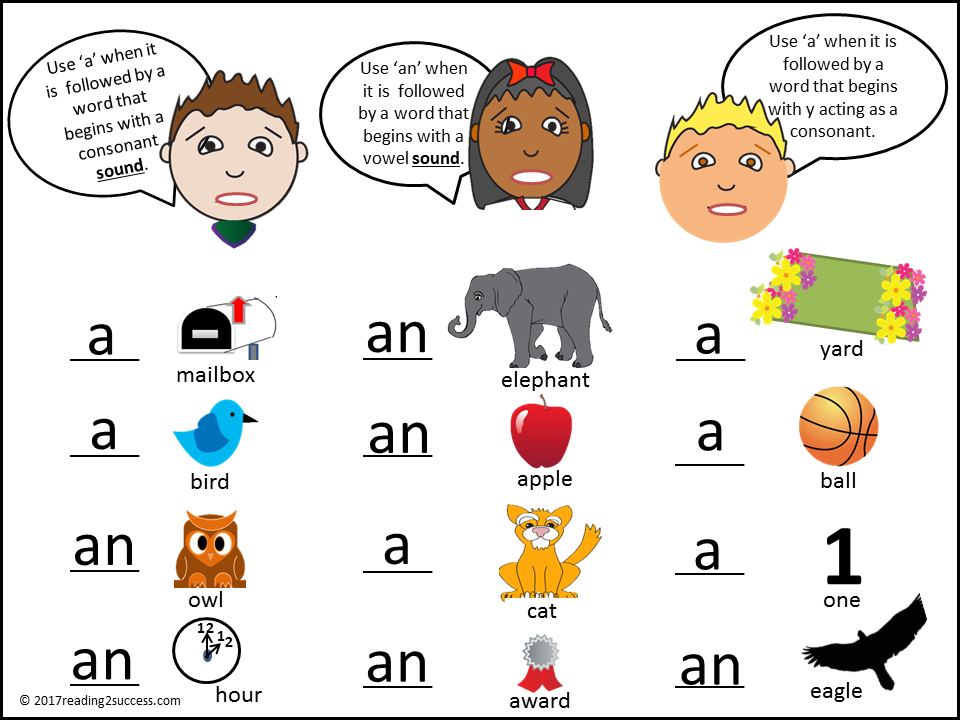 When they are pronounced, the air is exhaled with a sound, in the extension pipe or resonator chamber it acquires a certain timbre, which depends on the outlines of the oral cavity and pharynx, the direction of the air flow.
When they are pronounced, the air is exhaled with a sound, in the extension pipe or resonator chamber it acquires a certain timbre, which depends on the outlines of the oral cavity and pharynx, the direction of the air flow.
In addition to the above, here are the vowel sounds in Russian: Yo, E, Ya, Yu. These are ioted phonemes, that is, formed from O, E, A, U with the addition of the sound Y. and pharyngeal articulation, otherwise the speech will be inexpressive, ugly.
The articulation of vowels has a common feature: the raised soft palate is pressed against the back of the pharynx, the air flow through the nasal cavity is blocked, as a result, the air goes through the mouth opening. The vocal folds tighten to form the sound.
Here is the articulation of specific vowels:
- A – jaws open, distance between dentitions about 1.5 cm, lips not completely covering incisors and canines, tongue lies relaxed, front edge touching the lower teeth;
- O - lips are rounded and slightly elongated, cover teeth, tongue is shifted deep into the oral cavity, tense, in the back part is raised to the soft palate;
- Y - lips are compressed and extended like a pipe, the upper teeth do not touch the lower ones, the tongue is raised to the palate, and its base is pushed deep into the oral cavity;
- I - lips smile slightly, teeth slightly bared, tongue moved forward, raised;
- E - lips are smiling, the mouth is open so that teeth are visible, the tip of the relaxed tongue touches the incisors of the lower row, and the sides - the upper molars;
- S – mouth is slightly open, lips are stretched, there is a small distance between the incisors, the tense tongue is pushed back, raised in the back, but does not touch the palate.
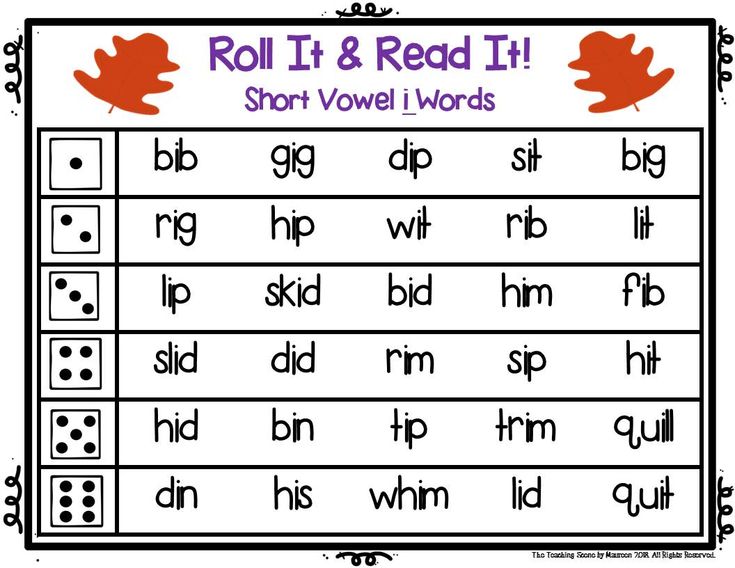
Methods of setting
2 methods of setting vowels are practiced by preschoolers. The first technique belongs to the defectologist Fedor Fedorovich Rau, includes the following items:
- Prolonged isolated pronunciation, also in syllables.
- Practicing isolated and syllabic pronunciation.
- Change the speaking volume.
- Syllabic pronunciation of a stressed and unstressed vowel, then in words.
- Definition of a vowel in syllables.
The teacher Ksenia Alexandrovna Volkova has a different approach:
- Isolated pronunciation.
- Pronunciation with strained organs of articulation of a stressed vowel located in the first syllable of words and in the first position of a syllable.
- Practicing stressed and unstressed phonemes.
- Pronunciation at the beginning and end of words, within words between consonants.
- Definition of a vowel in syllables, then in words.
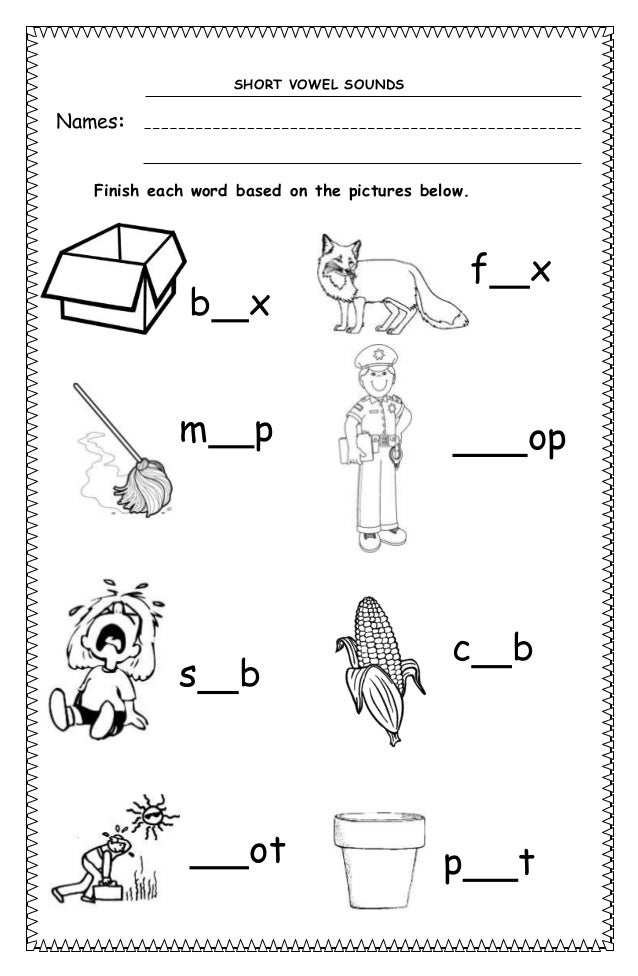
Pronunciation of vowels in children
Let's take a look at the principles of vowel pronunciation one by one. At the beginning of classes, articulatory gymnastics, massage of the tongue and cheeks are used to improve the motor skills of the organs of articulation.
Statement A
For the development of breathing, speech therapy exercises “Dive” are used - inhale through the mouth, and exhale through the nose, and “Smell the flower” - slowly and smoothly inhale without raising your shoulders, say “Ah!” as you exhale, as well as call for seething water in a glass by blowing air through a large diameter straw.
To produce sound A, we use the speech therapy game “We warm our hands”, aimed at forming a long, uniform and strong air jet. The child rounds his lips, evenly exhales warm air on his hands, as he would do in frosty weather, saying "Ah-ah-ah-ah."
Statement O
The game “What do I play?” is used to improve phonemic hearing.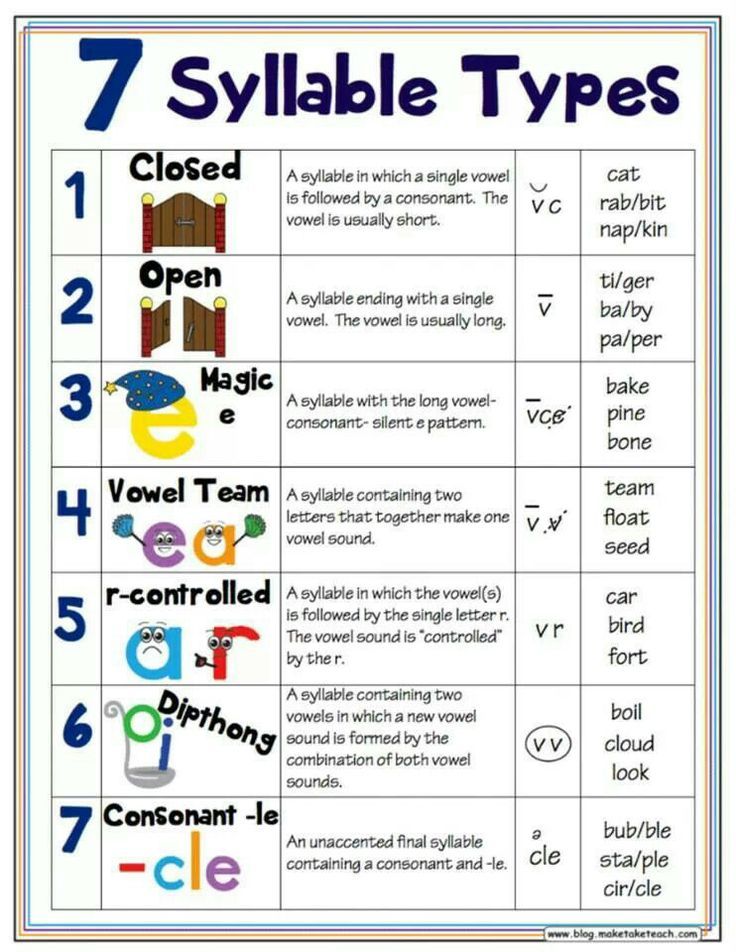 The teacher plays musical instruments without showing them to the children, and they try to guess which object makes the sound.
The teacher plays musical instruments without showing them to the children, and they try to guess which object makes the sound.
For the development of breathing ability, the games "Dive" and "Blowing out the candle" are used. In the second case, the child takes a deep nasal breath, slowly and quietly exhales air onto the candle flame so that it does not go out, then makes a strong and long exhalation so that the fire goes out. The challenge of water seething is also used, only through a straw of small diameter.
The sound O is imitated with the help of the game “How does the sick man groan?”. The child takes a deep breath through the nose. Pressing his lips into a tube and opening his mouth, exhales, while quietly saying: "Oh-oh-oh-oh-oh."
Statement I
To improve breathing, the teacher asks the child to blow like a light breeze, and also to create water seething using a straw of large diameter.
The sound And by imitation is put: it is pronounced slowly, with a gradual lengthening of the exhalation.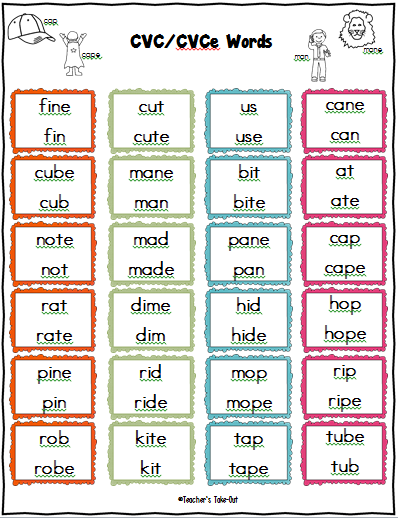 The teacher offers to scream like a donkey. The pupil says: "Eeyore!".
The teacher offers to scream like a donkey. The pupil says: "Eeyore!".
The second method is mechanical. The speech therapist slightly presses on the end of the tongue, moving it towards the incisors of the lower dentition.
Establishment E
To improve auditory perception, the exercise “Who is screaming?” is used. The teacher includes recordings of sounds made by different animals, and the pupil must find out who is screaming like that. Then the preschooler examines the images of animals, points with his finger, whose voices he heard.
Breathing exercises are the same: “Dive”, blow like a light breeze, and make the water boil with a straw of large diameter.
To produce the sound E, the game "Sighs" is practiced. The child imagines that he wants to breathe after hard work. He takes a deep breath through his nose, brings the tip of his tongue to the lower incisors and, opening his mouth, stretching his lips in a slight smile, quietly says: "Uh-uh-uh. " When a preschooler learns to quietly pronounce a phoneme, you can move on to pronunciation at the top of your voice.
" When a preschooler learns to quietly pronounce a phoneme, you can move on to pronunciation at the top of your voice.
Performance Y
The game “What do I play?” is used to improve auditory perception. For the development of respiratory ability, chanting pronunciation of vowels is practiced.
The sound Ы is made by imitation and mechanical method. In the second case, the speech therapist slightly presses on the tip of the tongue with a spatula, pushes the tongue back.
Setting U
To improve breathing ability, the tasks “Blowing out the candle” and creating bubbling in a glass using a large diameter straw are used.
The sound Y is set by imitation. The teacher asks how wolves howl at the moon. The pupil says: "Uuuu!". As a lost mushroom picker shouts in the forest: “Au-u-u-u!”. What sounds does a cow make: “Moo-oo-oo-oo!”.
The second setting method is mechanical. The speech therapist moves the tongue back with a spatula, and stretches the child's lips with his fingers.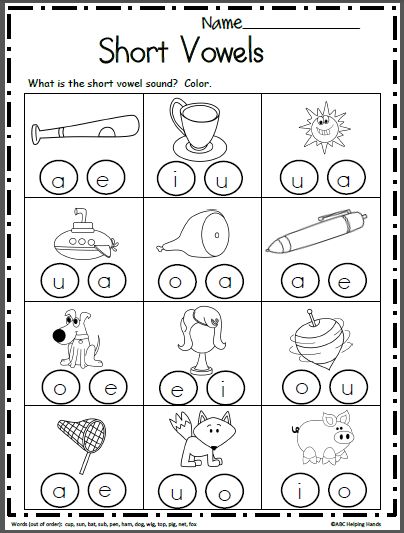
Automation of vowel sounds
After setting, automation of pronunciation follows. The beginning of classes is the same as during the setting, that is, all the same exercises are used to develop the auditory perception of phonemes and breathing ability.
Automation A
To automate isolated pronunciation, the classes “Warming hands”, “Anna crybaby” and “Anna falls asleep” are used. The teacher asks to show how Anya cries. The pupil at first quietly, then at the top of his voice says: “A-a-a-a-a!”. The teacher asks to lull the falling asleep Anya. The child makes a sound, as when rocking in a cradle: "Aaa-aaa-a!".
The second stage is the pronunciation of the vowel in words. The preschooler gives names to three girls in the pictures, says aloud after the teacher: “Anya. Masha. Allah."
Automation О
First, the vowel is pronounced in isolation, then in combination with other sounds.
To automate the pronunciation of a vowel in words, you need cards depicting a girl, a hoop, a window and a wasp.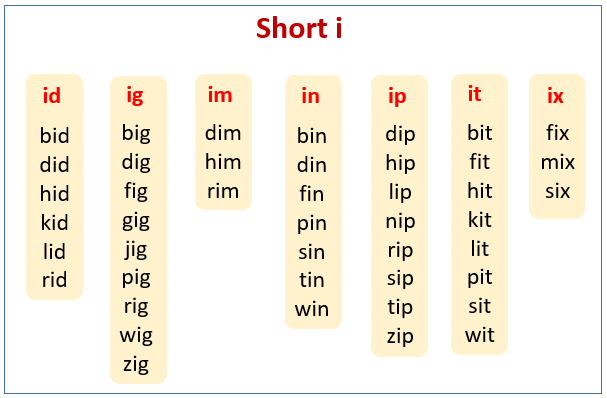 The preschooler repeats the sentences after the speech therapist: “This is Olya. Olya has a hoop. Olya looks out the window. Olya was bitten by a wasp.
The preschooler repeats the sentences after the speech therapist: “This is Olya. Olya has a hoop. Olya looks out the window. Olya was bitten by a wasp.
Another task is the repetition of words: vegetable, autumn, window, perch, nut, donkey.
Automation I
The child learns to pronounce the vowel in isolation, then in combination with other sounds.
For automation in words, the preschooler repeats after the speech therapist: game, pancake, lily, saw, lemon, turkey, plum, willow. Have the student draw one of the listed objects.
Automation E
Images of a girl and a dog are needed for the lesson. The child says after the teacher: “This is Emma. Emma has a dog, Edik. Emma calls the dog: "Edik, go eat!" Emma feeds the dog: "Edik, eat!"
Another task is the repetition of words: echo, this, emu, screen, popsicle, enamel.
Automation Y
First, automation is applied in isolation, then in combination with other phonemes.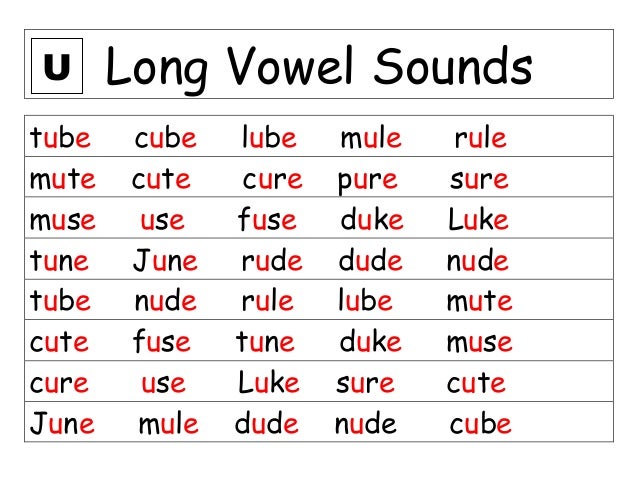
For automation in words, the preschooler pronounces the words after the teacher: smoke, melon, soap, mouse, red, dust, skis.
Automation U
At the initial stage of automation, isolated and syllabic pronunciation of the vowel is practiced.
The child pronounces the words after the teacher: ear, iron, already, lesson, fly, street, mind.
Articulation gymnastics for vowels
Clear pronunciation is largely determined by the development of speech organs. To improve the functionality of the speech apparatus, articulatory gymnastics is used:
- Garage. The child opens his mouth wide, imagining that this is a garage into which cars enter, while the tongue is relaxed. Closes after 5 seconds. And so 2 more times.
- Dog. The speech therapist demonstrates an image of a dog, how it grins, so the animal smiles. Then he invites the child to smile like a dog, showing his teeth. During the exercise, the preschooler looks at himself in the mirror.

Learn more


